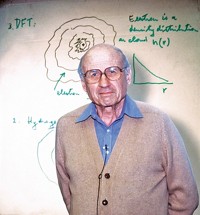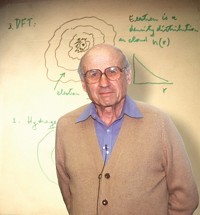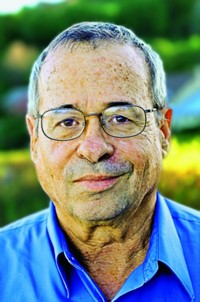Advertisement
Grab your lab coat. Let's get started
Welcome!
Welcome!
Create an account below to get 6 C&EN articles per month, receive newsletters and more - all free.
It seems this is your first time logging in online. Please enter the following information to continue.
As an ACS member you automatically get access to this site. All we need is few more details to create your reading experience.
Not you? Sign in with a different account.
Not you? Sign in with a different account.
ERROR 1
ERROR 1
ERROR 2
ERROR 2
ERROR 2
ERROR 2
ERROR 2
Password and Confirm password must match.
If you have an ACS member number, please enter it here so we can link this account to your membership. (optional)
ERROR 2
ACS values your privacy. By submitting your information, you are gaining access to C&EN and subscribing to our weekly newsletter. We use the information you provide to make your reading experience better, and we will never sell your data to third party members.
People
ACS Award In Theoretical Chemistry
Recipients are honored for contributions of major significance to chemistry
by Glenn Hess
January 19, 2009
| A version of this story appeared in
Volume 87, Issue 3
Sponsored by ACS
Robert G. Parr, research professor of chemistry at the University of North Carolina, Chapel Hill, is being honored for his groundbreaking research in quantum chemistry, most recently the density functional theory of molecular electronic structure.
Since the 1940s, Parr's work has influenced thousands of chemists, physicists, and other scientists. "Parr has made enormous scientific contributions, and he is truly an intellectual giant in the field of theoretical chemistry," says Weitao Yang, the Philip Handler Professor of Chemistry at Duke University. "All theoretical chemists discover, sooner or later, Parr's pivotal papers in the family tree of their research," adds Paul W. Ayers, associate professor in the department of chemistry at McMaster University, in Ontario, Canada.
Collaborating with the Dupont chemist Rudolph Pariser in the early 1950s, Parr developed a method of computing approximate molecular electronic structure and spectra of pi electron systems. Essentially the same procedure was proposed by John Pople at about the same time, so it is generally referred to as the PPP method. "A key element in the PPP method is the zero differential overlap approximation, and this came at a time when the maximum overlap principle reigned in structural chemistry," Parr remarks.
In the late 1970s, Yang says, Parr had the vision to realize that density functional theory (DFT)—an alternative to the conventional wave function method—"might very well someday turn out to be the method of choice for quantitative calculations on systems of chemical and biological interest, especially for those with large numbers of electrons."
DFT soon became a powerful tool for understanding many concepts of structural chemistry, including electronegativity equalization, hardness and softness, the HSAB (Hard & Soft Acids & Bases) principle, the maximum hardness principle, and electrophilicity.
In 1988, Parr, working with his then-postdoc Yang and graduate student Chengteh Lee, produced an improved DFT method for approximating the correlation energy, a fundamental property that measures how electrons in a many-electron system interact with one another. The Lee-Yang-Parr functional theory has been cited more than 22,000 times, making it one of the most highly cited papers in chemistry.
Parr's book, "Quantum Theory of Molecular Electronic Structure" (1963), was one of the first to expound on quantum theory's applications to chemical systems. With Yang, he coauthored "Density Functional Theory of Atoms and Molecules" (1989), which has become the standard introduction to the subject.
Parr received the A.B. degree magna cum laude from Brown University in 1942 and a Ph. D. in physical chemistry from the University of Minnesota in 1947. He served on the Minnesota faculty for a year before joining the Carnegie Institute of Technology, where he became a full professor in 1957. In 1962, he moved to Johns Hopkins University and in 1974 to the University of North Carolina. He won the ACS Langmuir Award in Chemical Physics in 1944 and the National Academy of Sciences Award in Chemical Sciences in 2004. In 1967, he was one of the five founders of the International Academy of Quantum Molecular Science.
Looking back, Parr says he is greatly indebted to his father, Leland Parr; his wife, Jane; graduate supervisor Bryce Crawford; postdoctoral mentor Robert Mulliken; his doctoral students and postdocs; and many senior visitors. His greatest satisfaction, he says, has been the joy of doing research. "I just have been out on a playground having fun."
Parr will present the award address before the Division of Physical Chemistry.






Join the conversation
Contact the reporter
Submit a Letter to the Editor for publication
Engage with us on Twitter